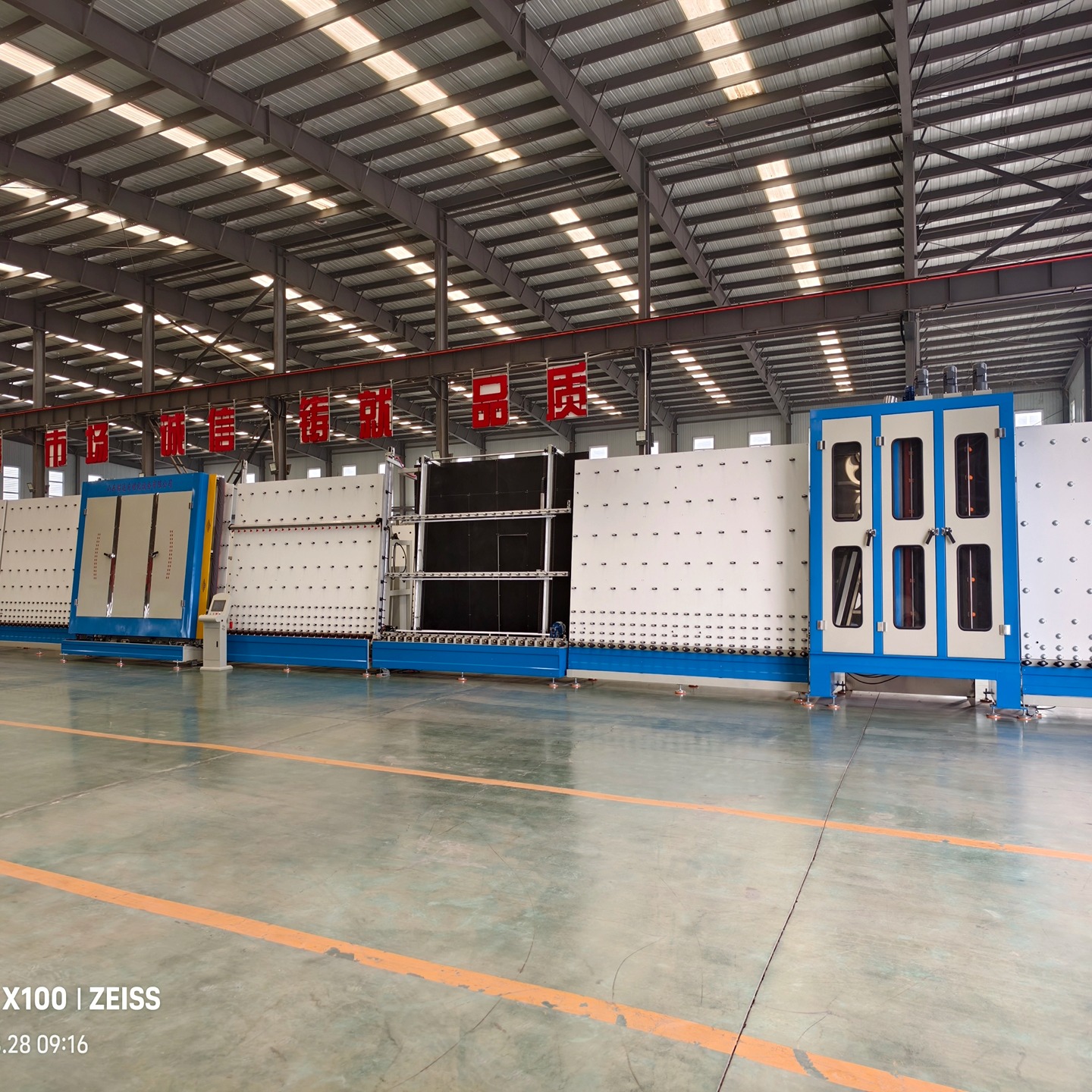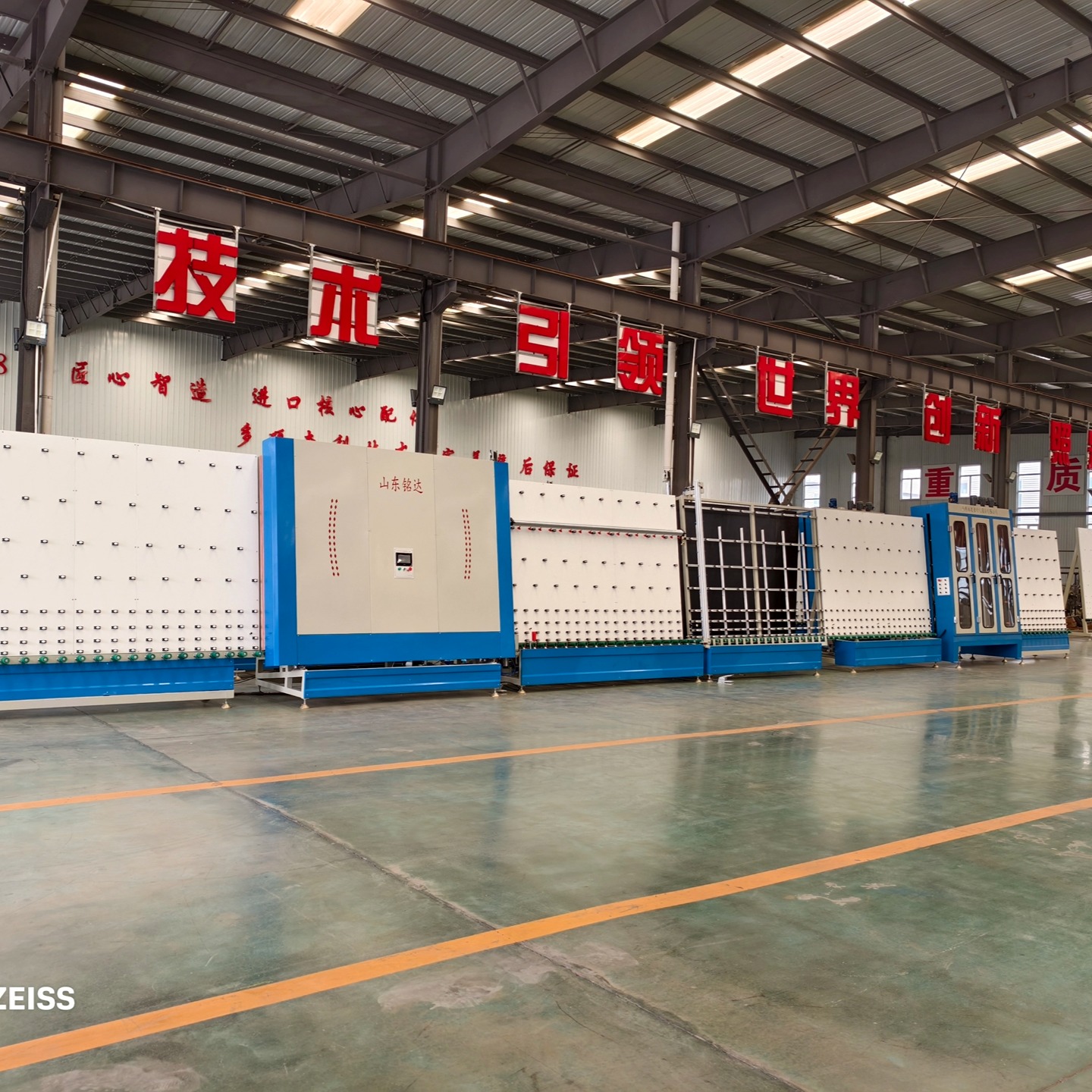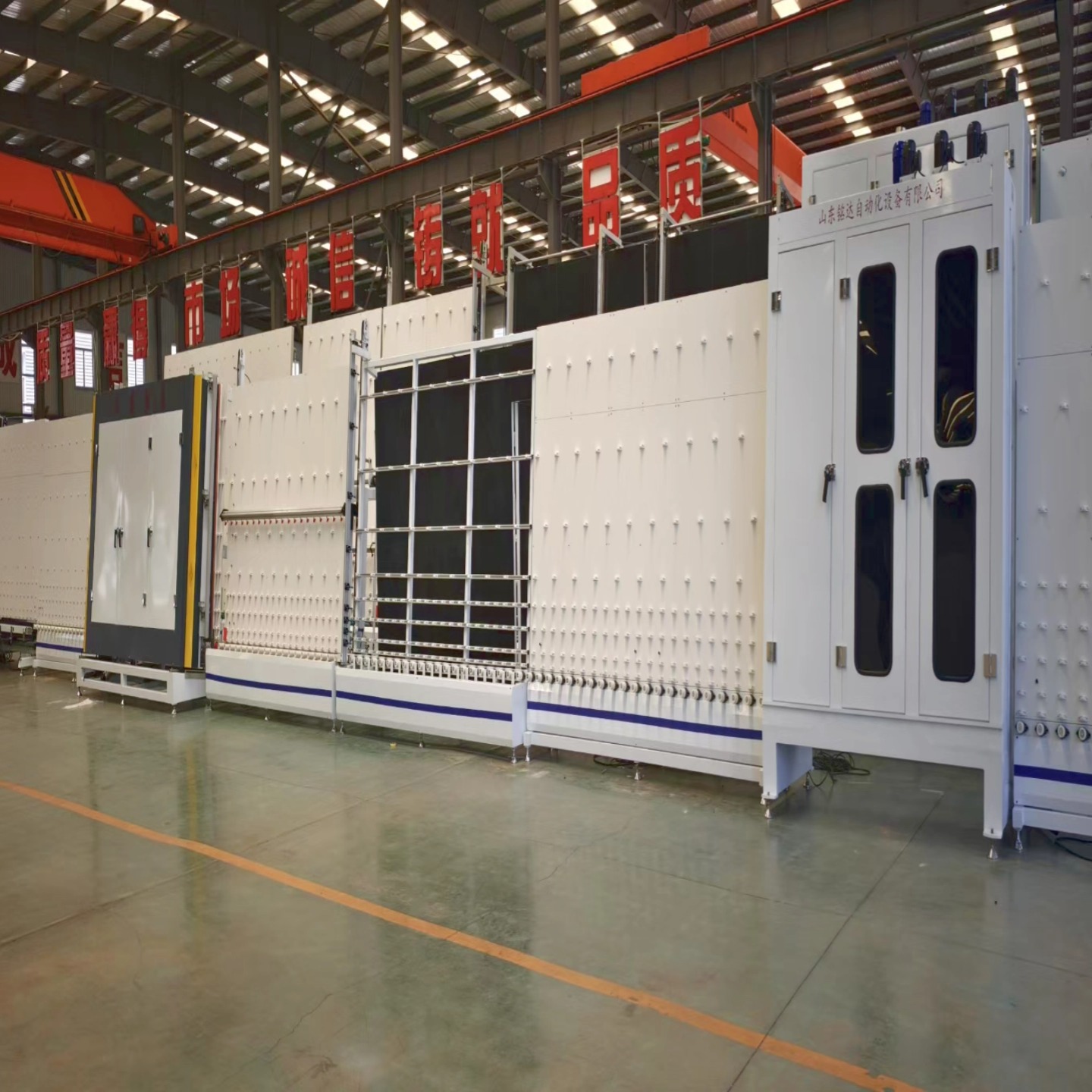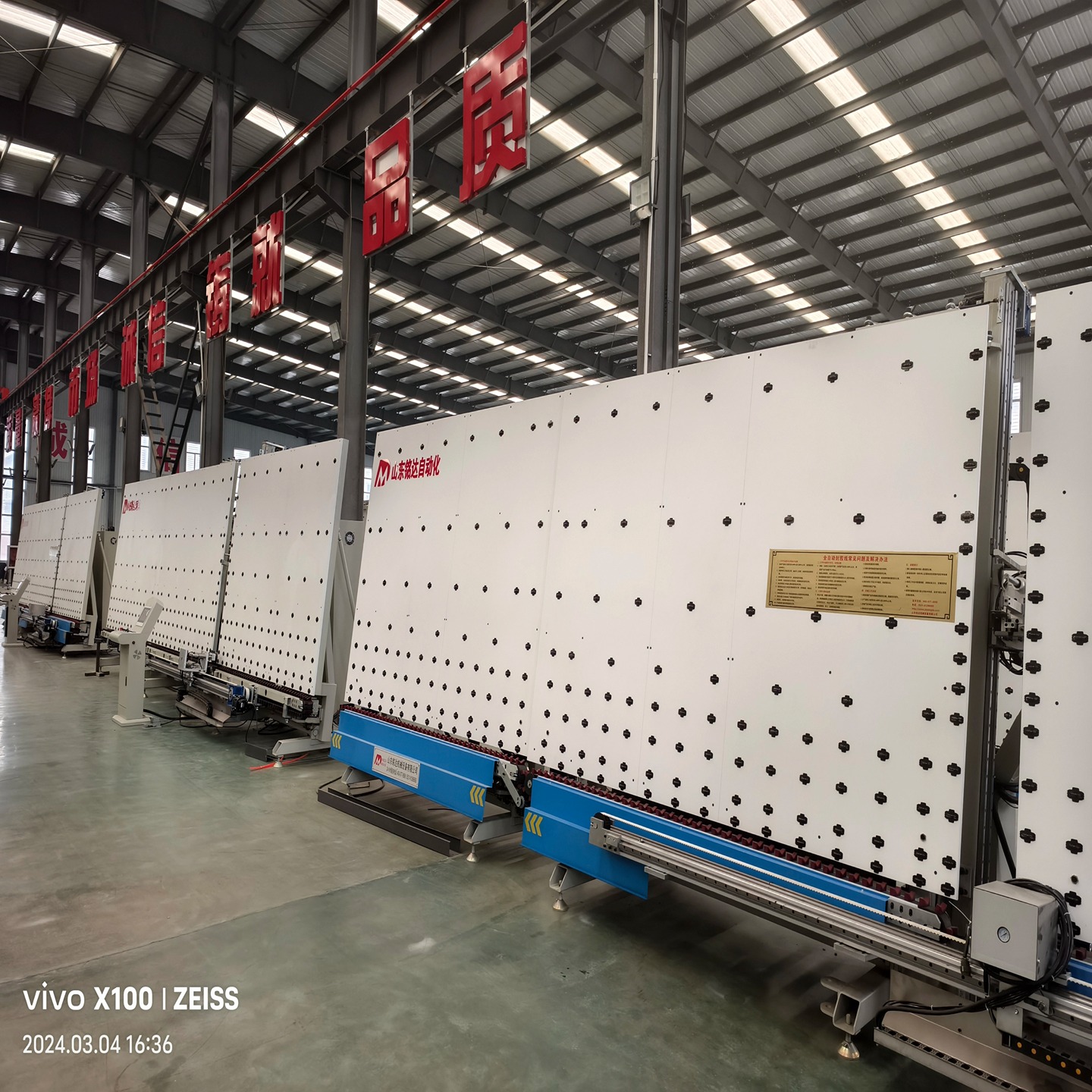Frequently asked questions and corresponding solutions
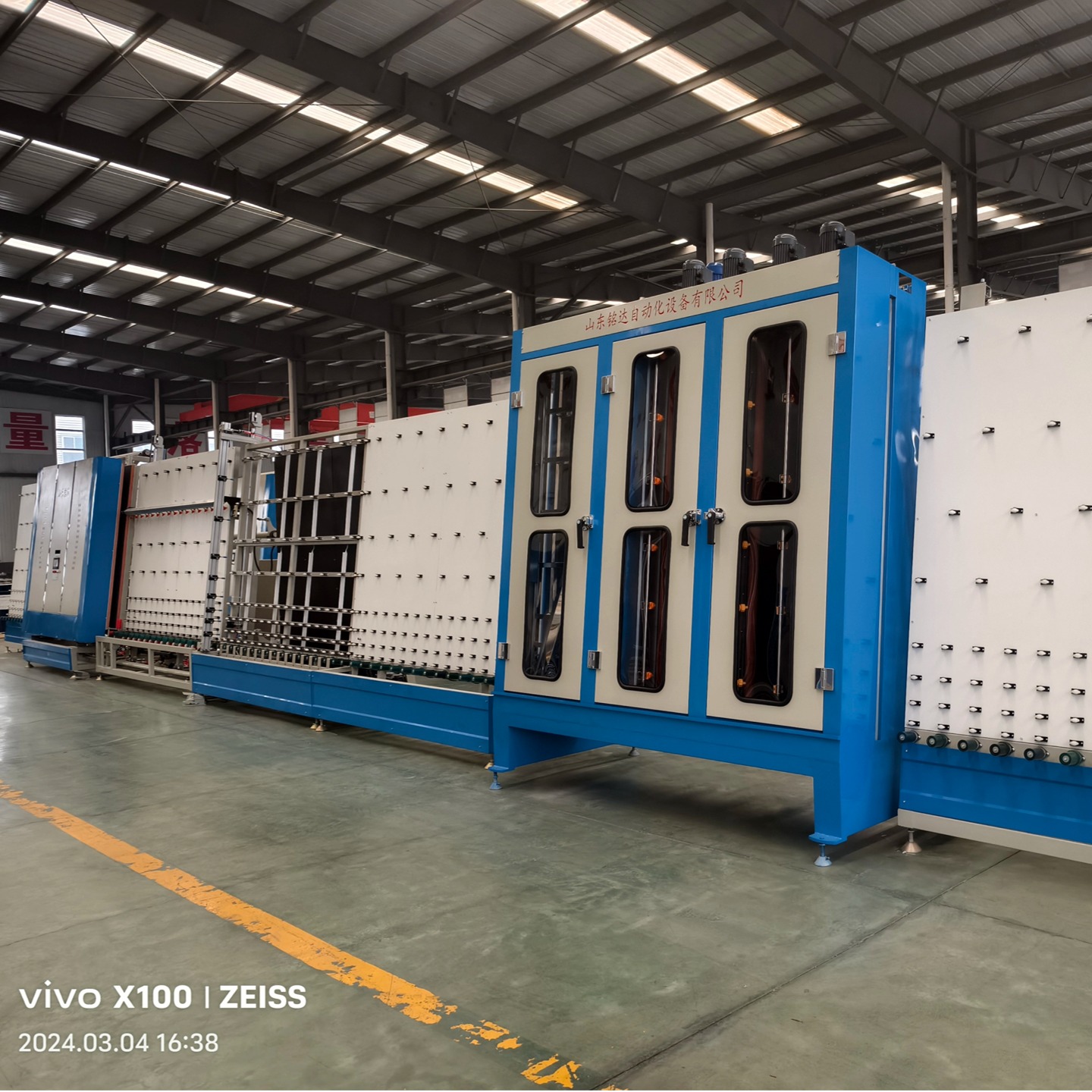
The insulating glass production line is a sophisticated and complex equipment system. As long as there is a deviation in one link during the production process, the quality of the final product may not meet the standard. In severe cases, the entire batch of products may even be scrapped. Therefore, understanding common equipment problems and mastering the corresponding solutions play a vital role in ensuring the smooth progress of production and effectively controlling costs. This article will combine the core processes of insulating glass production to sort out the problems that frequently occur during the operation of the equipment and the corresponding response strategies.
1.Cleaning link issues: The core crux lies in “cleanliness”
Cleaning is the first step to ensure the sealing effect of insulating glass. Once there is a problem in this link, it is likely to cause a chain reaction in subsequent production links.
Problem 1: After the glass is cleaned, water marks and spots still remain on the surface, or the drying is incomplete.
Reason analysis:
Water quality factors: Use ordinary tap water when cleaning. The water contains more minerals. When the water evaporates, scale will be left behind.
Factors related to cleaning components: the brush is worn and hardened, or the surface is contaminated with oil; the wiper blade is aged and deteriorated, has chips on the edge, or is installed at an inappropriate angle.
Factors in the air-drying system: The wind generated by the fan is insufficient, the air nozzle is blocked by debris, or the heating pipe is faulty and cannot work properly.
Solution:
Change the cleaning water source and use pure water or deionized water for glass cleaning.
Check the brushes and wipers regularly and replace them if they are worn.
Clean the air duct of the air drying system, check whether the fan is operating normally, whether the heating element is intact, and ensure that the fan can blow out strong hot air with a suitable temperature.
2.Problems in frame making and gluing: the core key lies in "accuracy"
Frame making and gluing are key links in building the internal chamber of insulating glass. Problems in this link will directly affect the sealing service life of the insulating glass product.
Problem 2: The bending accuracy of the spacer bars (aluminum bars) is insufficient, and the frame made is irregular and square, or the size deviates from the standard requirements.
Reason analysis:
The programming data of the bending machine is incorrectly set, or the mechanical positioning components of the equipment are deviated, resulting in inaccurate positioning.
The conveying rollers have been worn for too long, or foreign matter has adhered to the surface, causing the spacer bars to slip or shift during the feeding process.
Solution:
Calibrate the bending machine regularly and check the input size parameters with the actual size of the output finished product to ensure that they are consistent.
Clean and maintain the conveyor roller table to ensure that the surface of the roller table is smooth and free of debris.
Problem 3: During the coating process of butyl glue, uneven application, glue breakage, or bubbles in the glue layer after coating
Reason analysis:
Temperature factor: Improper control of the heating temperature of butyl rubber - too high a temperature will cause the butyl rubber to carbonize, smoke, and produce bubbles and coke particles; too low a temperature will reduce the fluidity of the butyl rubber, causing the glue to not flow smoothly.
Pressure factors: The glue discharge pressure of the equipment is unstable and fluctuates between high and low, affecting the coating effect.
Glue nozzle factors: The inside of the glue nozzle is blocked by impurities, or wears out due to long-term use, causing the shape of the glue outlet to change.
Solution:
According to the requirements of the type of butyl rubber used, the heating temperature is accurately set and monitored in real time, and the carbonized impurities generated in the heating tank are regularly cleaned.
Adjust the air supply pressure to ensure that the glue discharge pressure remains stable.
Regularly clean the impurities inside the glue nozzle. If the glue nozzle is seriously worn, replace it in time to ensure that the glue outlet is smooth and free of burrs.
Problem 4: The adsorption capacity of molecular sieve (desiccant) is weak. After the equipment is started for production, internal condensation will appear in the insulated glass soon.
Cause analysis:
The quality of the selected molecular sieve itself does not meet the standards, or the model does not match the production requirements of insulating glass and cannot meet the adsorption requirements.
After opening the package, the molecular sieve has been exposed to the air for too long and has absorbed a large amount of moisture in advance, reaching an adsorption saturation state.
After filling the molecular sieve into the spacer, the glass sheeting operation was not performed in time, causing the molecular sieve to lose its adsorption effect.
Solution:
Screen high-quality molecular sieves with high adsorption rates to ensure that their quality and model meet production needs.
Strengthen the management of molecular sieves, follow the "ready-to-use" principle, and try to shorten their exposure time in the air; standardize the production operation process, and quickly start laminating work after the molecular sieves are filled.
3.Problems with tablet joining and pressing: the core points lie in “alignment and pressure”
The operational effects of sheet joining and pressing are directly related to the overall structural stability and sealing performance of the insulating glass. The core is to ensure glass alignment and uniform pressure.
Problem 5: After the glass sheets are combined, the two pieces of glass are misaligned, or the "angle" part of the glass is not tightly sealed.
Cause analysis:
The positioning baffle on the laminating machine is inaccurate, or the photoelectric detection device is faulty and cannot accurately detect the position of the glass.
The running speed of each section of the conveyor rollers is not synchronized, causing the glass to shift position when entering the lamination process.
Solution:
Recalibrate the centering system and positioning device of the laminating machine to ensure that it can accurately position the glass.
Check the running speed of each conveyor roller, and adjust the speed to ensure that all rollers operate synchronously.
Question 6: When applying the second sealant (polysulfide glue/silicone glue), the glue layer contains bubbles, is partially missed, or the thickness of the glue layer is inconsistent.
Cause analysis:
Mixing factors: The mixing ratio of the A and B components of the second sealant is uneven, or the static mixer fails and cannot work properly, resulting in poor colloid curing effect, or bubbles in the adhesive layer.
Pump pressure system factors: The pressure of the glue supply system is unstable, and the sealing components of the pump body are not tightly sealed, causing air to be sucked into the pump body.
Glue nozzle factors: The glue nozzle is worn, or the gap between the glue nozzle and the glass surface is improperly adjusted, which affects the coating effect.
Solution:
Check the proportioning pump of the glue machine, calibrate it, and replace the static mixer regularly to ensure that the glue components are mixed evenly.
Exhaust the air inside the gluing system, check the sealing condition of the pump body seal, and replace the seal if necessary.
Adjust the height and inclination angle of the glue nozzle to ensure that the glue is discharged evenly and can completely cover the first sealant.
4.The relationship between finished product quality issues and equipment
Many quality defects in finished insulating glass products can be traced back to their root causes, mostly related to equipment operation or equipment status:
Condensation and fogging inside the finished product: The most fundamental reason is the failure of the sealing performance of the insulating glass. At this time, it is necessary to focus on checking whether the coating quality of butyl glue is qualified, whether the molecular sieve still has adsorption capacity, and whether there are any problems such as missed coating and leaking spots in the second sealant.
"Newton ring" interference fringes appear on the surface of the finished glass: The main reason is that the pressure during the tableting process is too large or the pressure distribution is uneven, causing the glass to deform. The pressure parameters and equipment balance of the tablet press need to be adjusted to ensure appropriate and uniform pressure.
The performance of finished inflated glass (such as argon-filled glass) is not up to standard, especially the low argon gas retention rate: the root cause of the problem lies in the inflating process. It is necessary to check the sealing perfor
Establish a preventive maintenance system
1. Daily maintenance: Clean the surface of the equipment every day, check whether the air pressure of the equipment is normal, and clean the residual colloid inside the glue nozzle in a timely manner.
2. Weekly/monthly maintenance: Calibrate the equipment's sensors weekly or monthly, check the operating status of the transmission components, and replace vulnerable parts such as brushes, wipers, and static mixers.
3. Implementation of operating specifications: Strengthen the training of operators and require them to operate in strict accordance with the equipment operating procedures, especially the real-time monitoring of key parameters such as temperature, pressure, speed, etc.
By building a systematic equipment maintenance system and carrying out accurate problem diagnosis, we can minimize the frequency of equipment failures and ensure that the insulating glass production line can continuously and stably produce high-quality insulating glass products.
